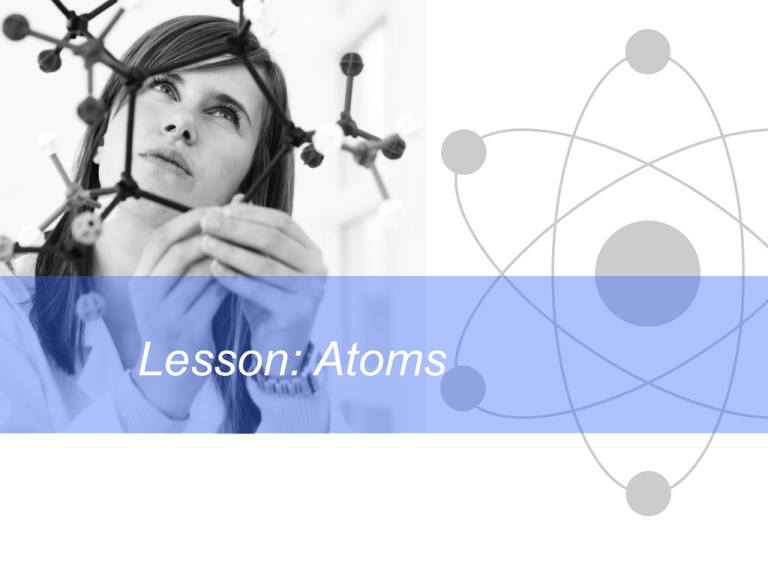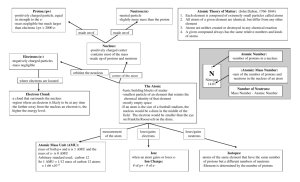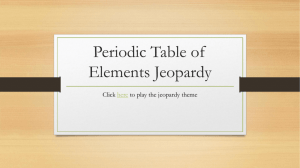Atoms Intro
advertisement

Lesson: Atoms Science Differentiation in action Elements are made up of one type of atom. Gold nuggets are made up of gold atoms. Gold nuggets A sheet of copper is made up of copper atoms. Sheet of copper Science Differentiation in action Remember, elements are listed on the Periodic Table. If a substance is listed on the Periodic Table, it is an element e.g. copper (Cu) and gold (Au). Can you name any other elements? Science Differentiation in action The Periodic Table tells us about the atoms that make up the elements. Part of the Periodic Table 2 He 10 Ne 18 Ar Some nonmetals Science Differentiation in action Atoms are extremely small. Each full stop in your textbook contains more than 1000 million atoms. Science Differentiation in action Each atom is made up of smaller parts called sub-atomic particles. There are three types of sub-atomic particle: Protons Neutrons Electrons Science Differentiation in action A diagram of an atom nucleus electrons neutrons The size of the nucleus is large to make the diagram easier to draw and understand. In reality, the nucleus is much smaller relative to the size of the atom. protons Science Differentiation in action A diagram of an atom nucleus electrons neutrons protons Science Differentiation in action The three types of sub-atomic particles are found in different parts of an atom Protons are found in the nucleus. Neutrons are found in the nucleus. Electrons orbit around the nucleus. Science Differentiation in action A diagram of an atom nucleus electrons orbit in shells neutrons in the nucleus protons in the nucleus Science Differentiation in action The three types of sub-atomic particles have different masses Protons are 1 amu. Neutrons are 1 amu. Electrons are 1/1840 amu. amu = atomic mass unit Science Differentiation in action A diagram of an atom nucleus electrons orbit in shells 1/1840 amu neutrons 1 amu protons 1 amu Science Differentiation in action The three types of sub-atomic particles have different charges. Protons are positive. Neutrons are neutral. Electrons are negative. Science Differentiation in action A diagram of an atom nucleus electrons orbit on shells negative neutrons neutral protons positive Science Differentiation in action Review Questions 1. Label each part in the diagram. 2. What is the charge of each particle? A D B C protons Science Differentiation in action Question to think about! oxygen How do atoms fit together? hydrogen A water molecule containing two hydrogen atoms chemically combined to one oxygen atom.







